The Tissot Heritage 1973 Chronograph
Drive back into the groovy 1970s on board this compelling remake of Tissot’s sporty 1973 Navigator chronograph.

Tissot has been ticking in the city of Le Locle since 1853 and holds the distinction of selling more watches than any other Swiss watch brand. In 2019, for example, sales of Tissot watches were estimated at 3.5 million, positioning the brand in seventh position in the top ten Swiss watch brand ranking. Renowned for its outstanding price/quality ratio, Tissot’s long history means that it also has its fair share of golden oldies. Last year Tissot dug into its archives and presented a remake of its 1970s Navigator chronograph. Following the success of the limited-edition Heritage 1973, Tissot produces a second-generation, unlimited-production model with more fuel in the tank, more colour and a strong 1970s vibe; the cool Tissot Heritage 1973 Chronograph.
Particularly Resistant Ties to Racing
The brand’s first association with motorsports dates to 1958 when Swiss driver Harry Zweifel sent Tissot a signed photograph of himself behind the wheel of a sports car and the message: “My Tissot is by my side at every race”. In 1965, Tissot launched the Tissot PR 516, a racing-inspired steel watch with holes in the bracelet to evoke the holes of the steering wheel of sports cars. With its suspended movement and lateral protection against axial and lateral shocks, the PR in the name stood for Particularly Resistant. Rally pilot Henry Bradley was so fond of his Tissot PR 516 that he wrote the name of the watch on his Ferrari.
It was clear that Tissot had found a lucrative marketing tool and in 1973 the brand sponsored Alpine in the Monte Carlo rally. Buoyed by the success, Tissot continued its partnership with Team Renault Alpine between 1977-1982 in the 24 Hours of Le Mans and Formula 1 races. Renault moved into Formula 1 racing in 1977 with a turbo engine. For fans of motorsports, Jean-Pierre Jabouille was behind the wheel between 1977 and 1978, followed by René Arnoux in 1979 and the mythical pilot Alain Prost in 1981.
However, the watch that concerns us today belongs to the period when Tissot was sponsoring Porsche at the 24 Hours of Le Mans in 1974 with drivers Claude Ballot-Lena and Vic Elford on board a Porsche 911 Carrera RSR. In the advert below, you can see the tail fin of the Porsche and a chronograph with two white sub-counters, an early version of the Navigator that inspired the Tissot Heritage Navigator 1973.
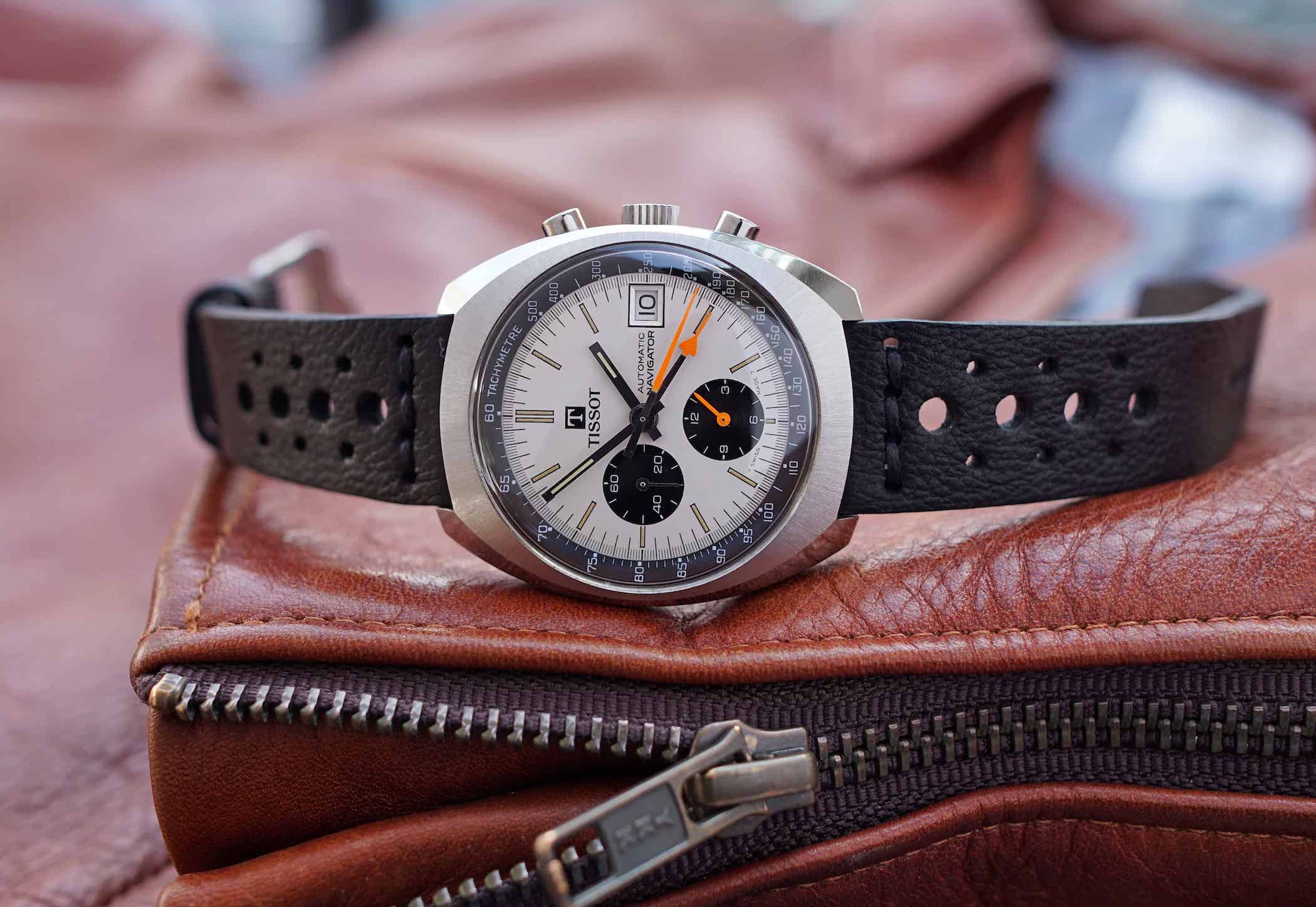
Swiss driver Loris Kessel would become Tissot’s new hope for Formula 1 in 1976. Competing in five Grand Prix races in a blue-and-white Brabham BT44 with the English RAM team, Kessel’s car bore the new Tissot logo especially designed for car racing. More importantly, Kessel wore a Navigator chronograph. When Tissot decided to relaunch its classic racing chronograph last year, the brand got in touch with Loris’ son Ronnie Kessel to promote the limited edition Heritage 1973. Tissot is also the official partner of Kessel Classics, where Ronnie Kessel and his team lovingly restore legendary vintage racing cars to return to the track and compete.
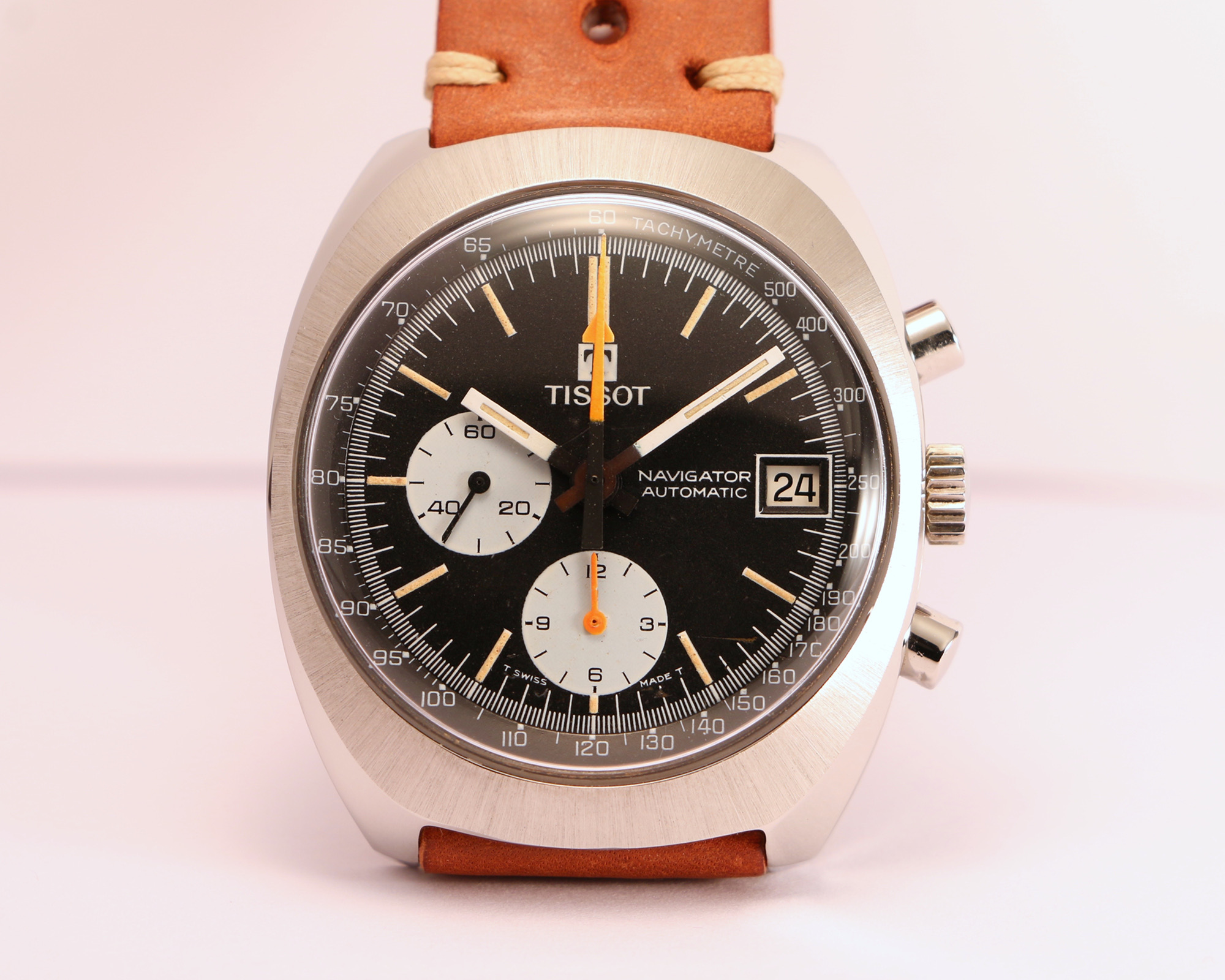
As you can appreciate in our previous article, there are some slight changes between the 2019 version and the latest 2020 Tissot Heritage 1973 models. Although we are only covering the black dial model, there are in fact three different dial colours – black, white and blue – to choose from on Tissot’s webpage.
1970s Cushion case
The robust tonneau or cushion-shaped stainless steel case captures the design mood of the 1970s. Large, masculine and conspicuous, the cushion case is symptomatic of men’s sports watches in the 1970s and displays the satin-brushed surfaces and polished bevels of the era. The case, which is larger than the 39mm original Navigator, has a diameter of 43mm and a height of 14.8mmm, and the crown and mushroom-style pushers are slightly larger than the original, though perfectly in tune with the measurements of a contemporary sports chronograph. The watch is large but sits snugly on the wrist (Brice’s wrist used in the photos measures 16.5cm) thanks to the short lugs, the sloping bezel and the curved middle case.
A domed, scratch-resistant sapphire crystal with anti-reflective coating protects the dial, an upgrade over the original acrylic glass. The fact that the glass is domed means that you’ll get those groovy distortions on the scale of the tachymeter that add personality to the watch. The weight of the watch is 125 grams, and the water-resistance is 100 metres.
REVERSE Panda Dial
Panda dials in the watch world usually refer to chronographs with white backgrounds and black sub-dials, just like the large white heads of pandas and their black eyes and muzzle. The model we have for our hands-on is a reverse panda dial with a black background and white counters. The layout is a classic 3-6-9 configuration with a 30-minute counter at 3, a 12-hour counter at 6 and running seconds at 9 o’clock, all with snailed interiors, black markings and orange hands for the chronograph times. As you can see from photos of vintage models above, some of the first Navigators came with two sub-dials and at times with just one.
This second-generation Tissot Heritage 1973 model features a groovy design tweak inside the 30-minute elapsed time counter with the area between 0 and 5 highlighted in bright blue. A race track-inspired sports watch would be lost without a tachymetre scale; here the scale is calibrated to 500 km/h and, unlike some sporty models where the scale is pushed into the nether regions of the periphery, it can be read with ease. As mentioned, the chronograph hands are orange, just like the original and the central seconds hand features the original orange arrow.
The date window, originally placed at 3 o’clock on the original, now sits between the 4 and 5 o’clock markers. The blunt-tipped hour and minute hands are very similar to their ancestor and highlighted with green Super-LumiNova inserts, just like the hour markers. The finishing retro touch, and something that Tissot is proud to have invented in 1965, is the racing strap with large perforations allowing the skin to breathe and inspired by the holes found on steering wheels of the era.
Movement
Another upgrade over the 2019 model is the increase of power reserve in the tank. Fitted with a robust automatic cam-lever chronograph movement based on the Valjoux 7753, the power supply has been increased from 48 to 60 hours. Viewed from the mineral glass caseback, the movement is decorated with perlage, and the rotor is partially openworked and engraved.
Thoughts
This compelling remake of Tissot’s racing-inspired Navigator chronograph will hit a sweet note for fans of 1970s sports watches. Outgoing, colourful and robust, the Heritage 1973 distils the essence of a bygone era at a fair price.
Availability & price
The Tissot Heritage 1973 Chronograph is not a limited edition and retails for EUR 2,030. It is available from retailers and from the brand’s online boutique. More information at Tissotwatches.com.



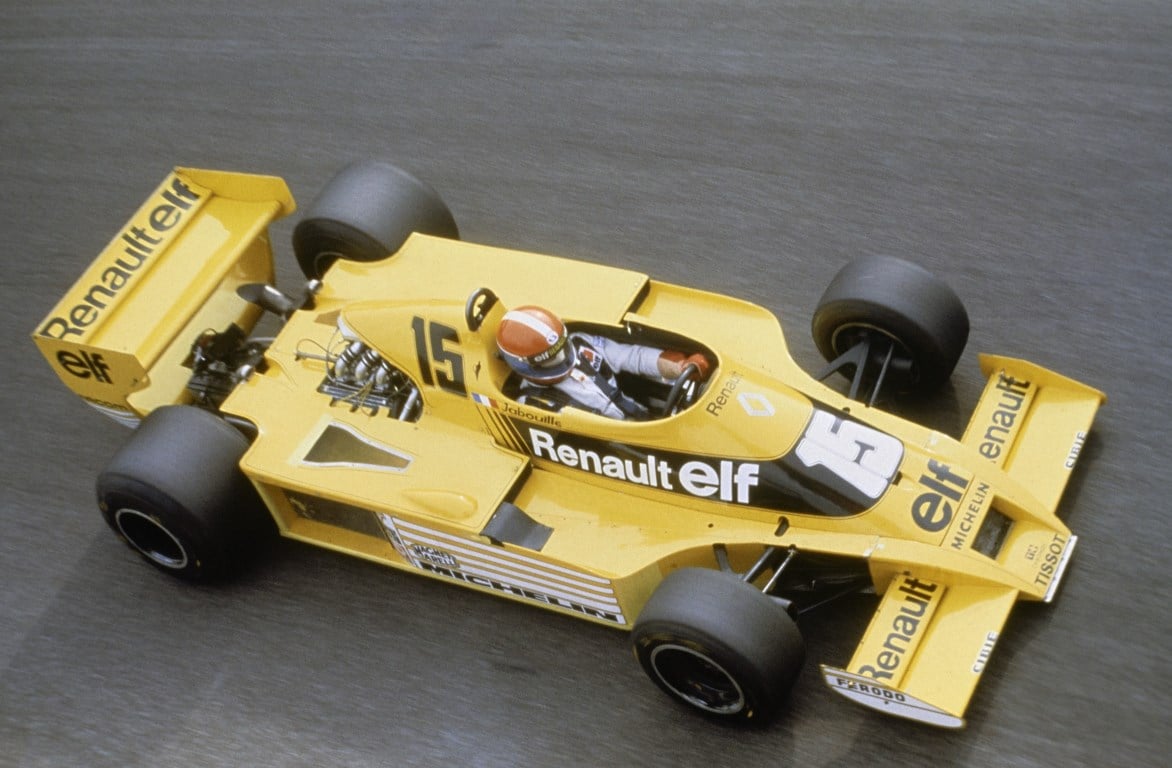
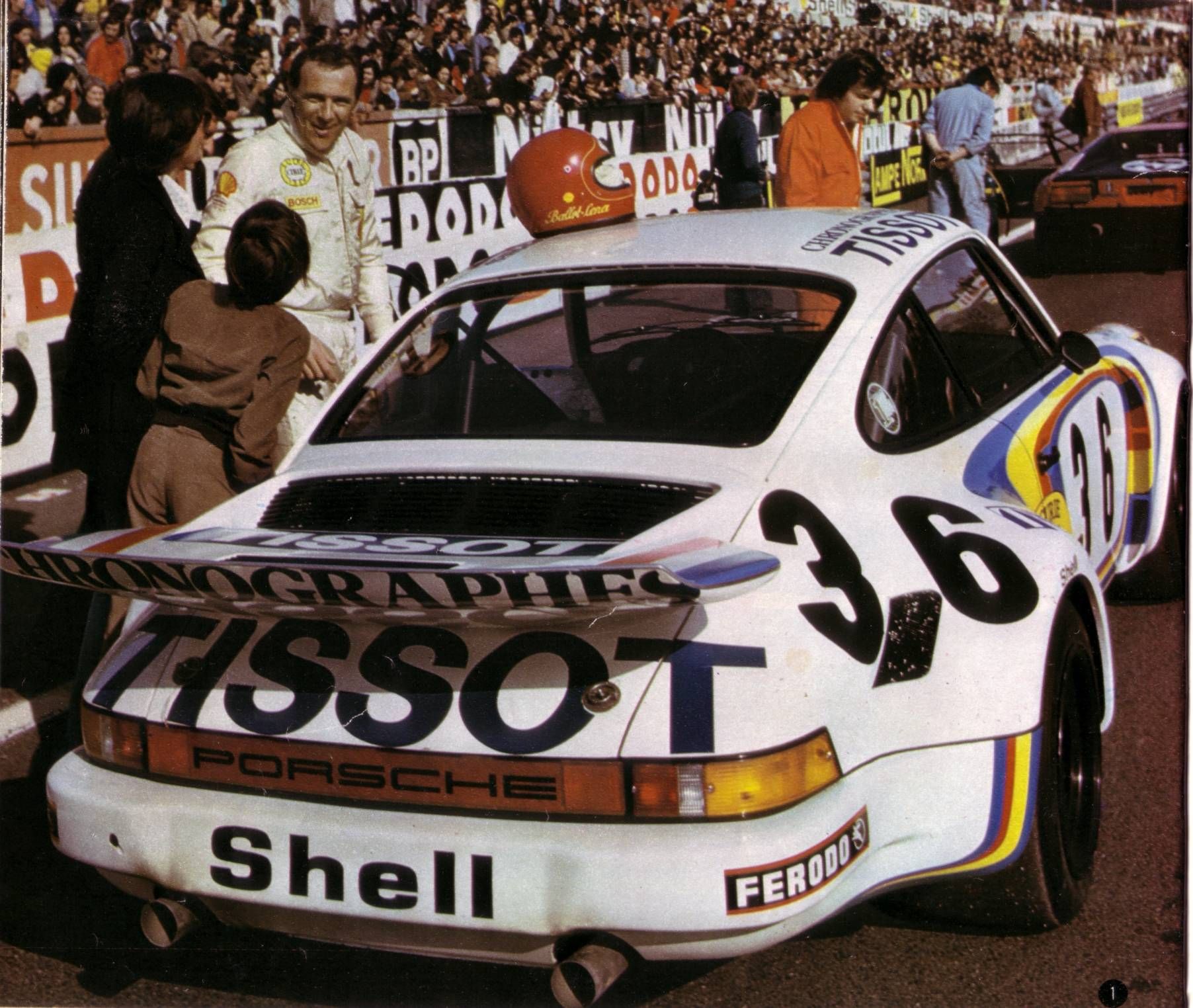
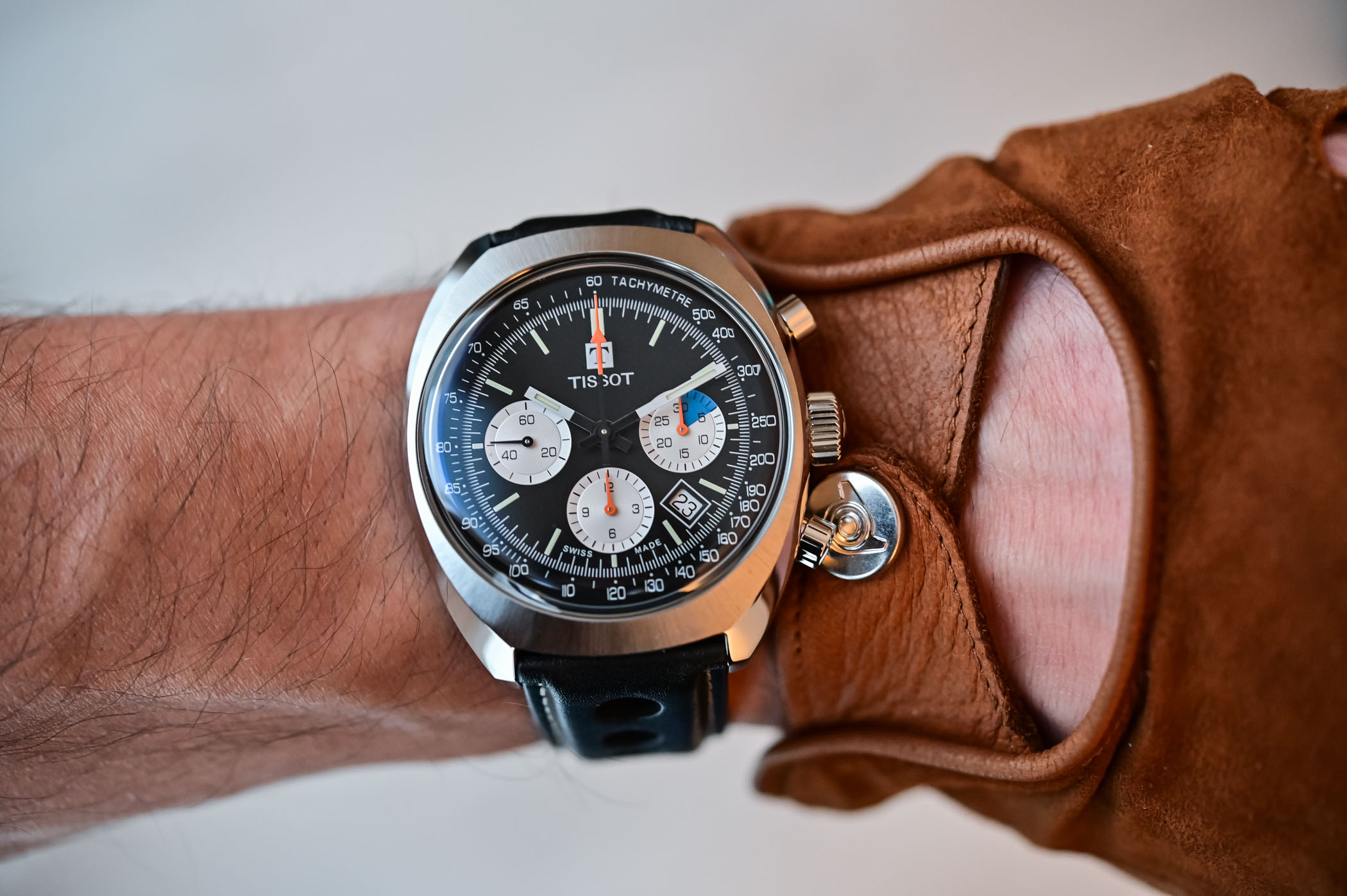
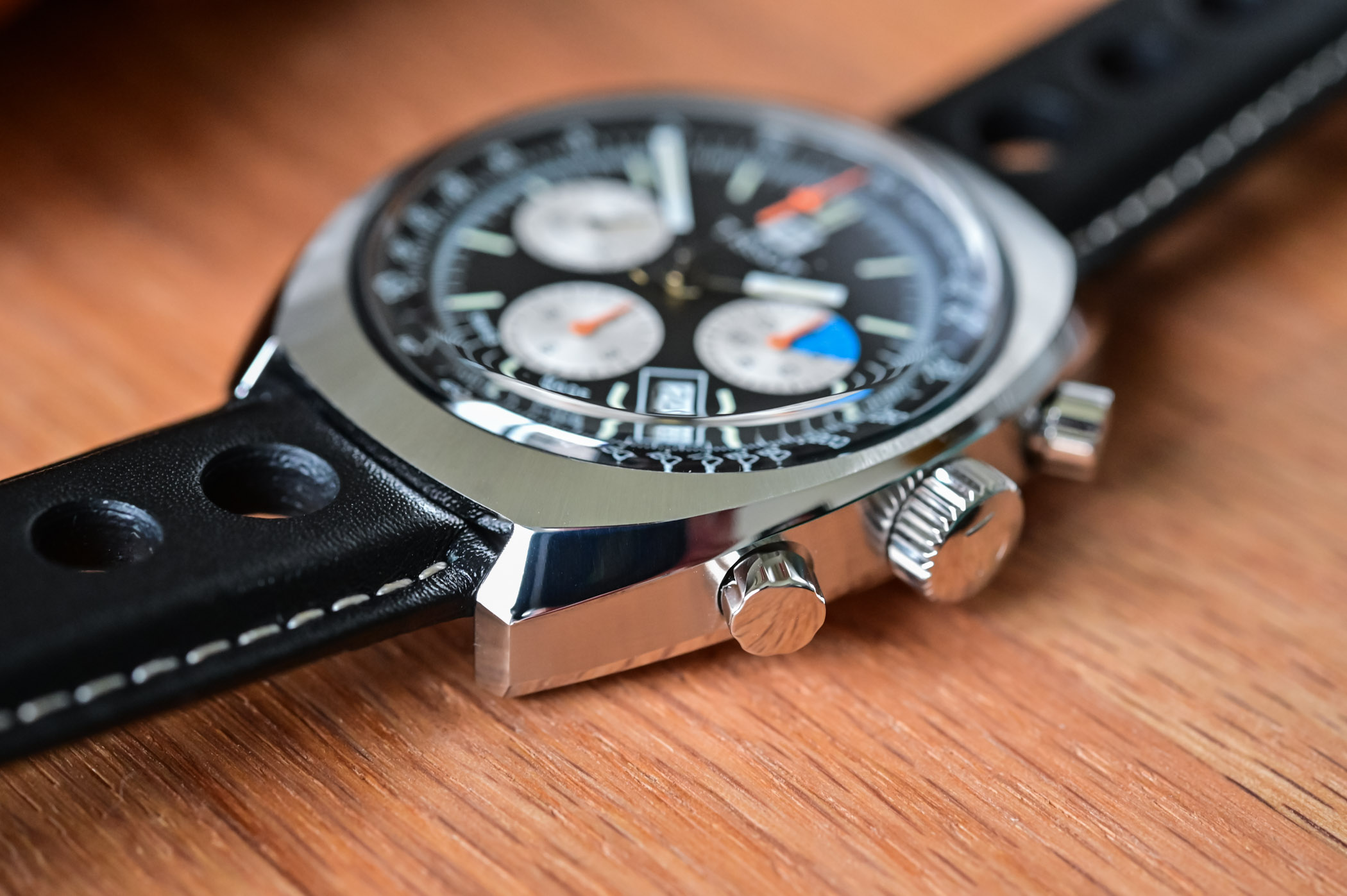
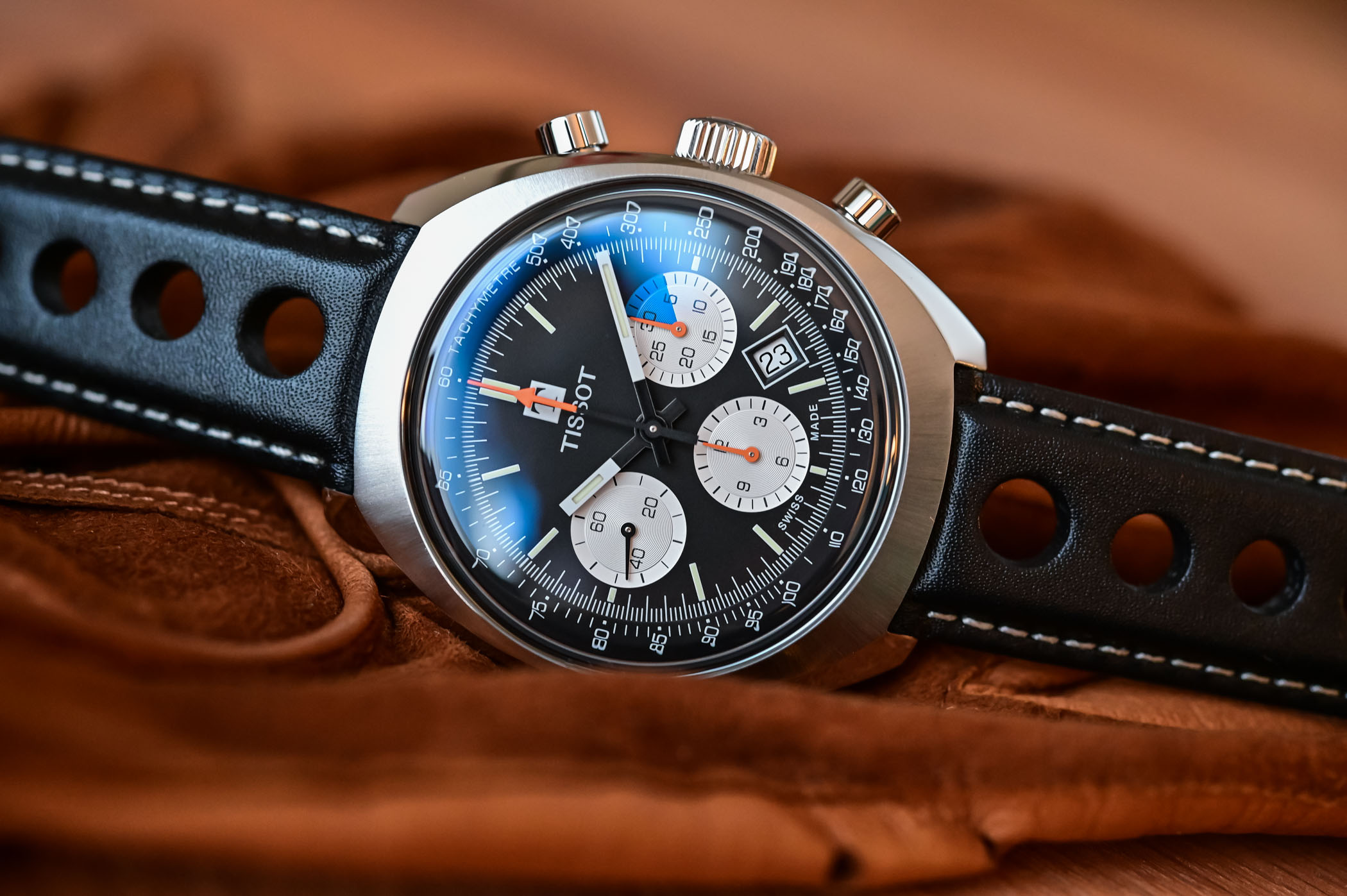
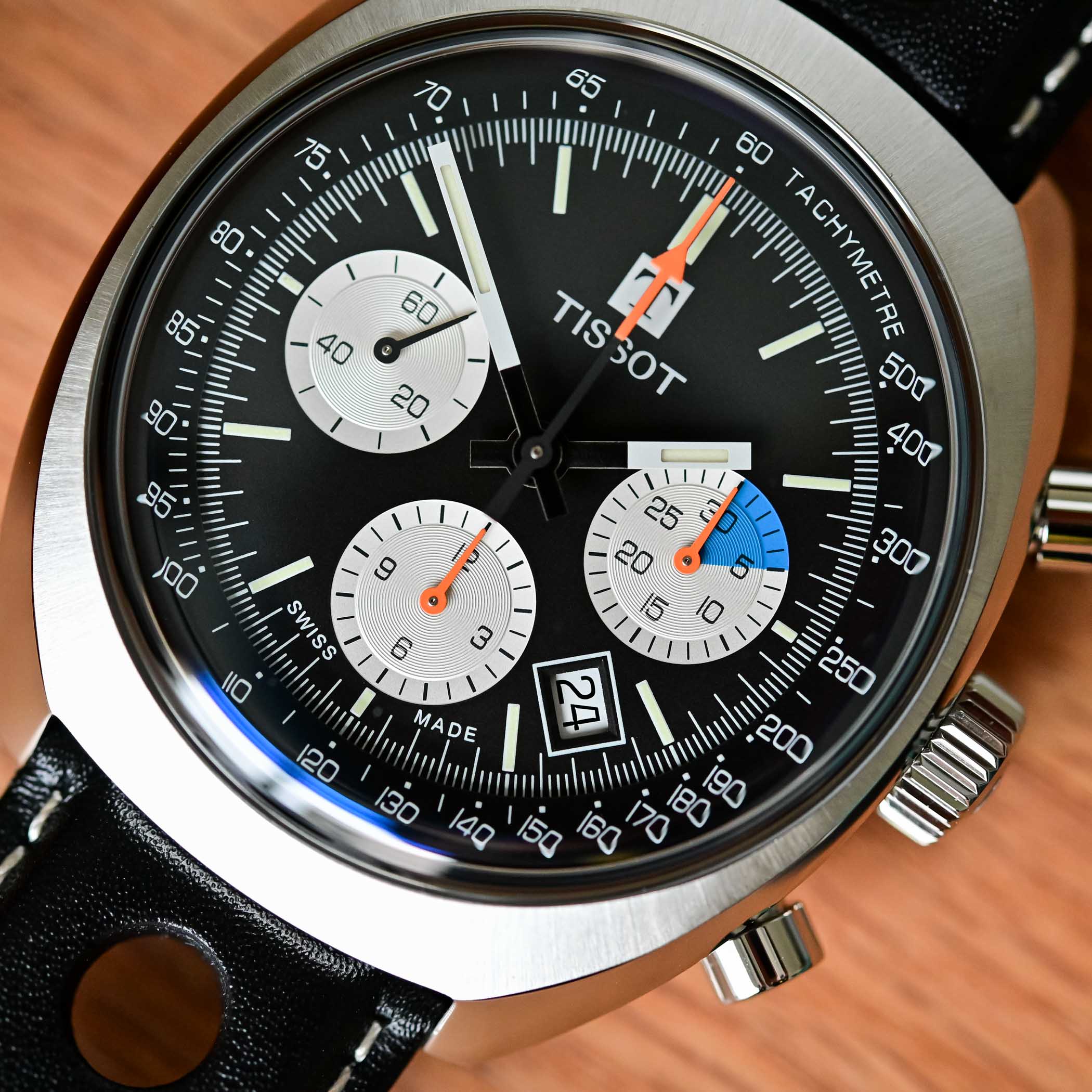
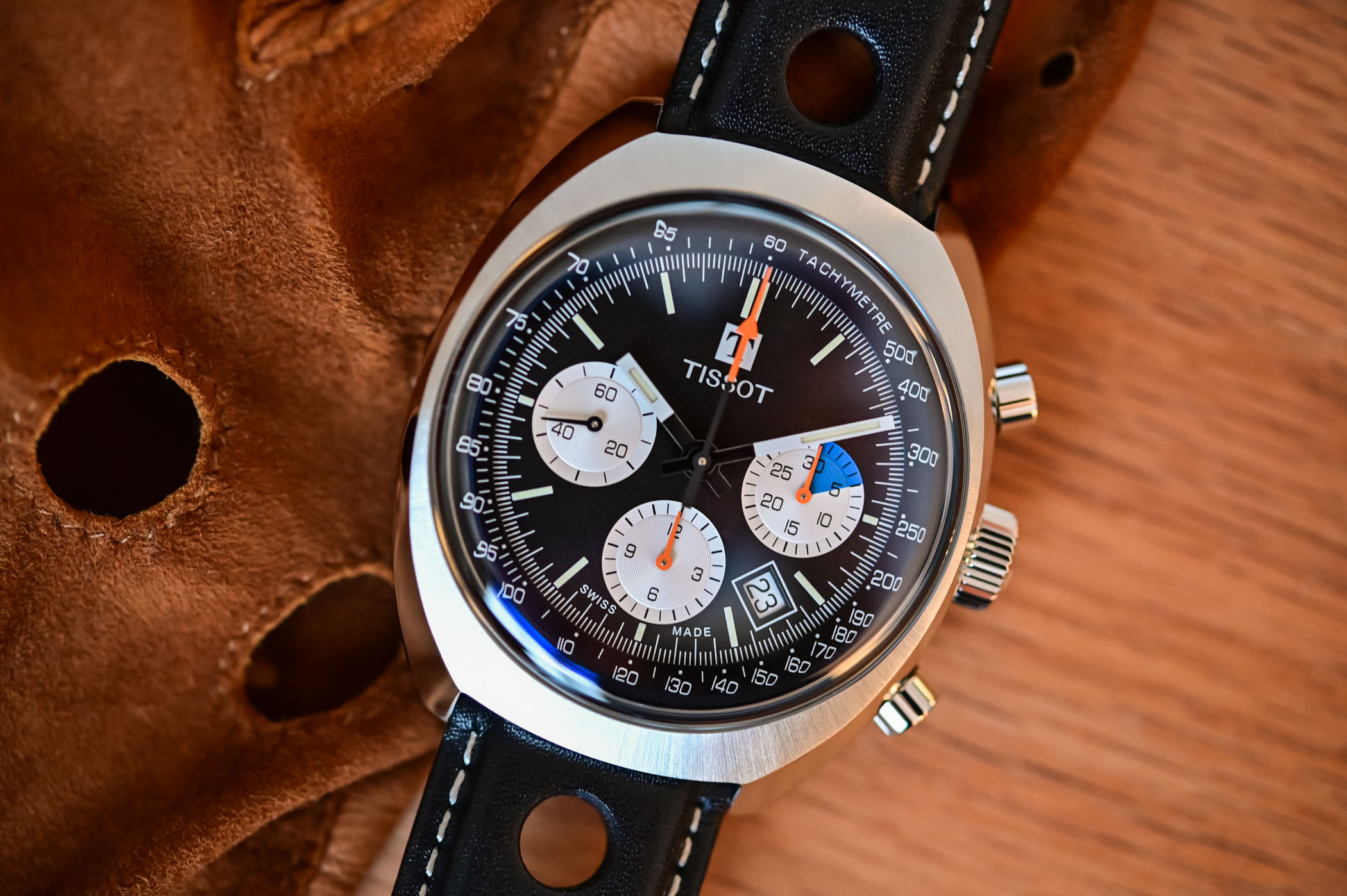
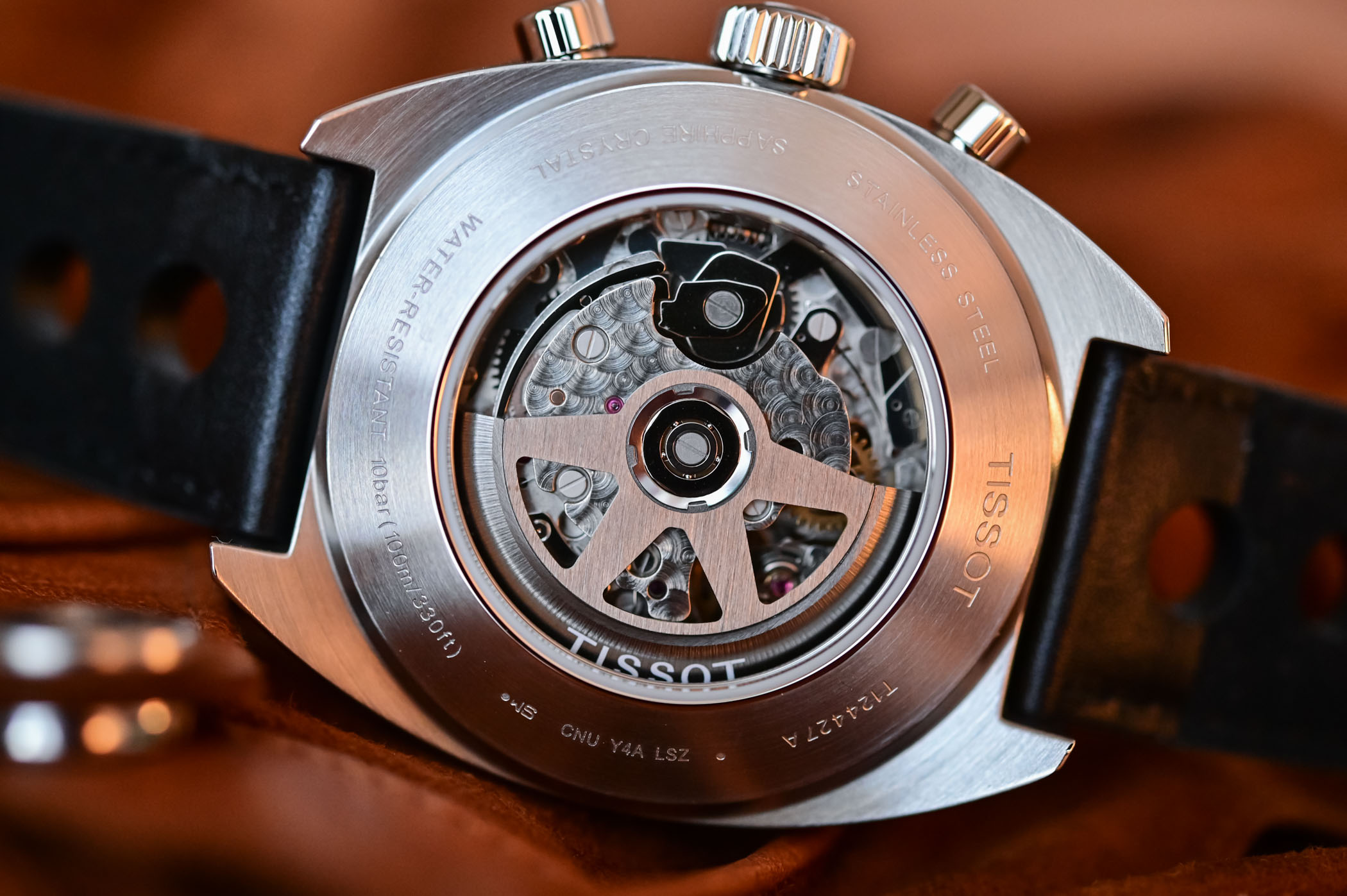
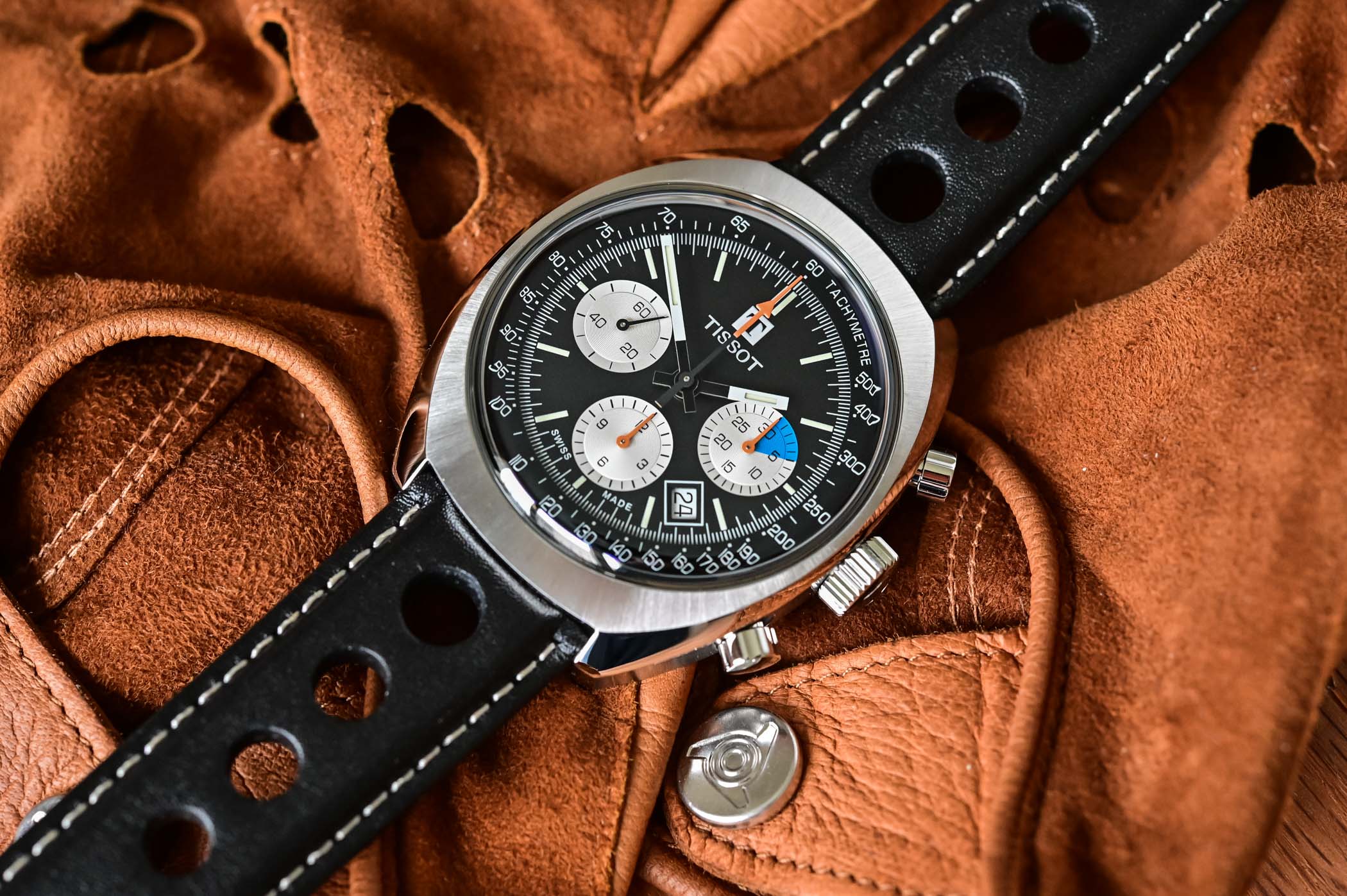



3 responses
if you like old school and have a giant wrist, this baby is for you ! I hate this “turtle” case style. Makes it awkward for a smaller wristed person like me but love the old school dial.(They could have omitted the date window,would have had a great effect).
Great review, thank you! Nice chronograph with a color splash but I was surprised at how big it looked on Brice’s wrist. I personally love tonneau cases but in smaller sizes like the doxa sub for example. I could have been tempted but already used the funds for the upcoming airain!
Great content. It would be nice if you could include lug to lug size as standard information in your reviews